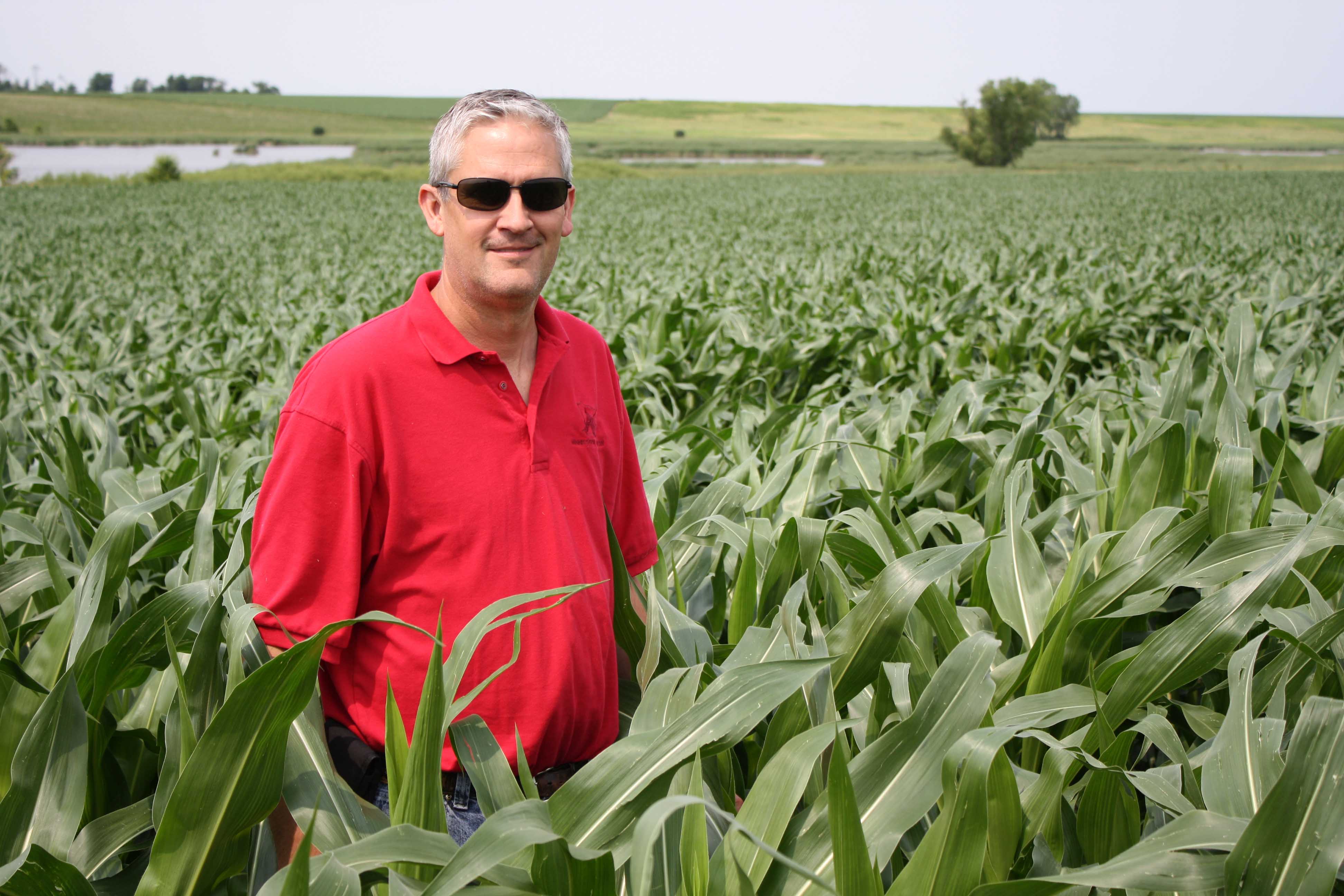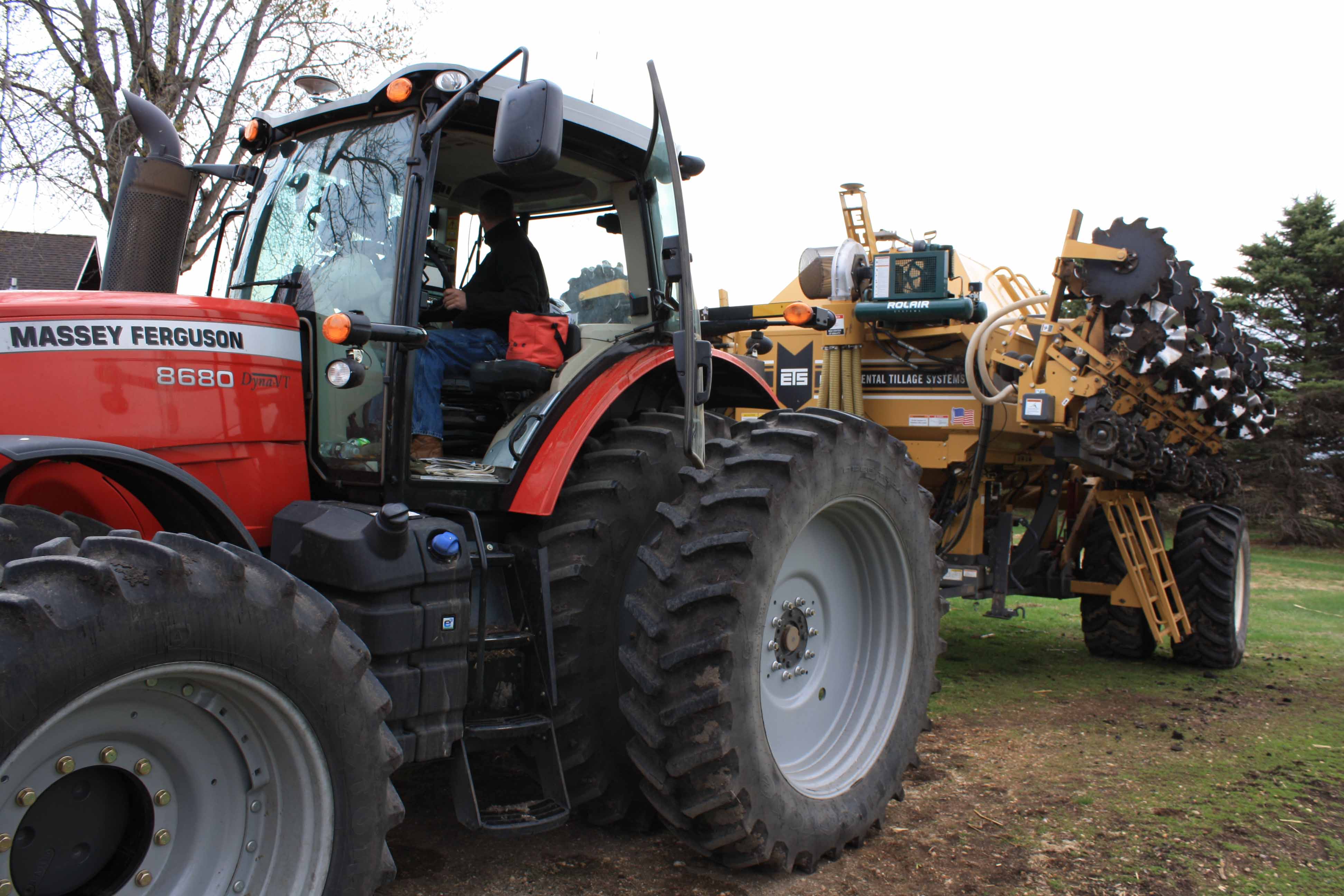This blog is part of a podcast series following one Minnesota farmer through a season of strip-till. Listen to the full audio episode by scrolling to the bottom of the page.
Our Most Popular Blogs
Episode 12: The Fall Tillage Pass
Episode 11: Harvest Begins
This blog is part of a podcast series following one Minnesota farmer through a season of strip-till. Listen to the full audio episode by scrolling to the bottom of the page.
A strong southerly wind blows across the prairie in western Minnesota’s Lac Qui Parle County as Ed Hegland’s Gleaner combine gobbles up rows of ripened soybeans. The combination of strong winds, dry air, and sunshine is ideal for crop dry down.
Farmers like Hegland don’t let perfect harvest days like this go to waste.
“I’ve gotten just about 400 acres done so I’m moving along,” Hegland says. “I’ve got about 900 acres of soybeans this year so I’ve got about 40 percent done. About 320 acres got the hail, so that’s got a few weeks to try and mature. So far the yield has been a fair amount above average and very uniform.”
Episode 8: The Economics of Strip-Till
This blog is part of a podcast series following one Minnesota farmer through a season of strip-till. Listen to the full audio episode by scrolling to the bottom.
Episode 7: Storms, Erosion, & Weed Control
This blog is part of a podcast series following one Minnesota farmer through a season of strip-till. Listen to the full audio episode by scrolling to the bottom.
A wet May gave way to a gorgeous June for farmers in western Minnesota’s Lac Qui Parle County. Ed Hegland, who grows corn and soybeans south of Appleton, Minnesota watched as his crops took advantage of the warming sun and adequate rainfall to grow strong and healthy on his zone-tilled fields. But as is often the case, weather can be fickle…for Hegland and many of his neighbors, July entered with a bang.
“About half my corn and probably 35 to 40 percent of my beans got hit really hard,” Hegland says. “Strip-till does great things but it doesn’t save me from hail.”
Episode 6: The Strip-Till Team
This blog is part of a podcast series following one Minnesota farmer through a season of strip-till. Listen to the full audio episode by scrolling to the bottom.
For farmers like Ed Hegland, experience is a good teacher. He’s been strip-tilling his Lac Qui Parle County corn acres since 2008 and his soybeans since 2012. Since the goal of farming is productivity while caring for the land, Hegland doesn’t go at it alone, but utilizes available expertise to get better at what he does.
Episode 5: Building Healthier Soils With Strip-Tillage
This blog is part of a podcast series following one Minnesota farmer through a season of strip-till. Listen to the full audio episode by scrolling to the bottom.
Despite getting his crops planted in good time this spring, emergence on Ed Hegland’s corn and soybeans has lagged because of cool, wet weather. Heavy and persistent spring rains and even a touch of late frost in May slowed the development of both crops, something strip-till farmers and full surface tillage farmers dealt with equally.
“It’s been really a challenge,” Hegland says. “Planting season went pretty well, but we’ve had some really cool weather and lots of rain, which has been good, but a lot of it came to fast and too much at once. Plus we had some frost on some beans when they were emerging.”
Episode 4: Winning at Yield with Conservation Tillage
This blog is part of a podcast series following one Minnesota farmer through a season of strip-till. Scroll down to listen to the full audio episode.
Shortly after he planted them, Ed Hegland dug his fingers into the freshly planted soil to see how much of moisture was available for his soybean seeds. The beans, planted about two inches below the surface, were resting in adequate moisture. Considering the widespread lack of moisture in his region tracing back to last fall, from last fall, this was a good sign.
Then the rains came. Ordinarily spring rains are welcomed. But in this case, more than 5 inches fell leaving too much of a good thing. Ponding was an issue on many farm fields, in some cases impacting seed emergence and stands.
Jodi Dejong-Hughes has been with the University of Minnesota for 18 years, working in the area of crops and tillage research. She says water carrying capacity is a benefit of soils that are strip-tilled.
Episode 3: The Spring Pass
This blog is part of a podcast series following one Minnesota farmer through a season of strip-till. Listen to the full audio episode by scrolling to the bottomof the page.
With the May sun shining brightly, Ed Hegland’s 16-row White planter easily carved through the soil on his farm near Appleton, Minnesota.
For the past three seasons, Hegland has zone-tilled all of his corn and soybean acres. This morning he planted soybeans into strips tilled days earlier with a SoilWarrior. Despite dry conditions last fall and a spring with only spotty rains, Hegland dug his fingers into the dirt to reveal that his newly-planted soybeans were in moist soil.
Episode 2: Finding the Right Strip-Till System
This blog is part of a podcast series following one Minnesota farmer through a season of strip-till. Listen to the full audio episode by scrolling to the bottomof the page.
Like any good farmer, Ed Hegland did plenty of homework before making the leap from full surface to reduced tillage on his land. Hegland made the switch on his corn acres in 2008 and for the past three years he’s zone-tilled all of his farmland in western Minnesota’s Lac Qui Parle County.









.png?width=4608&height=4608&name=twitter%20(4).png)